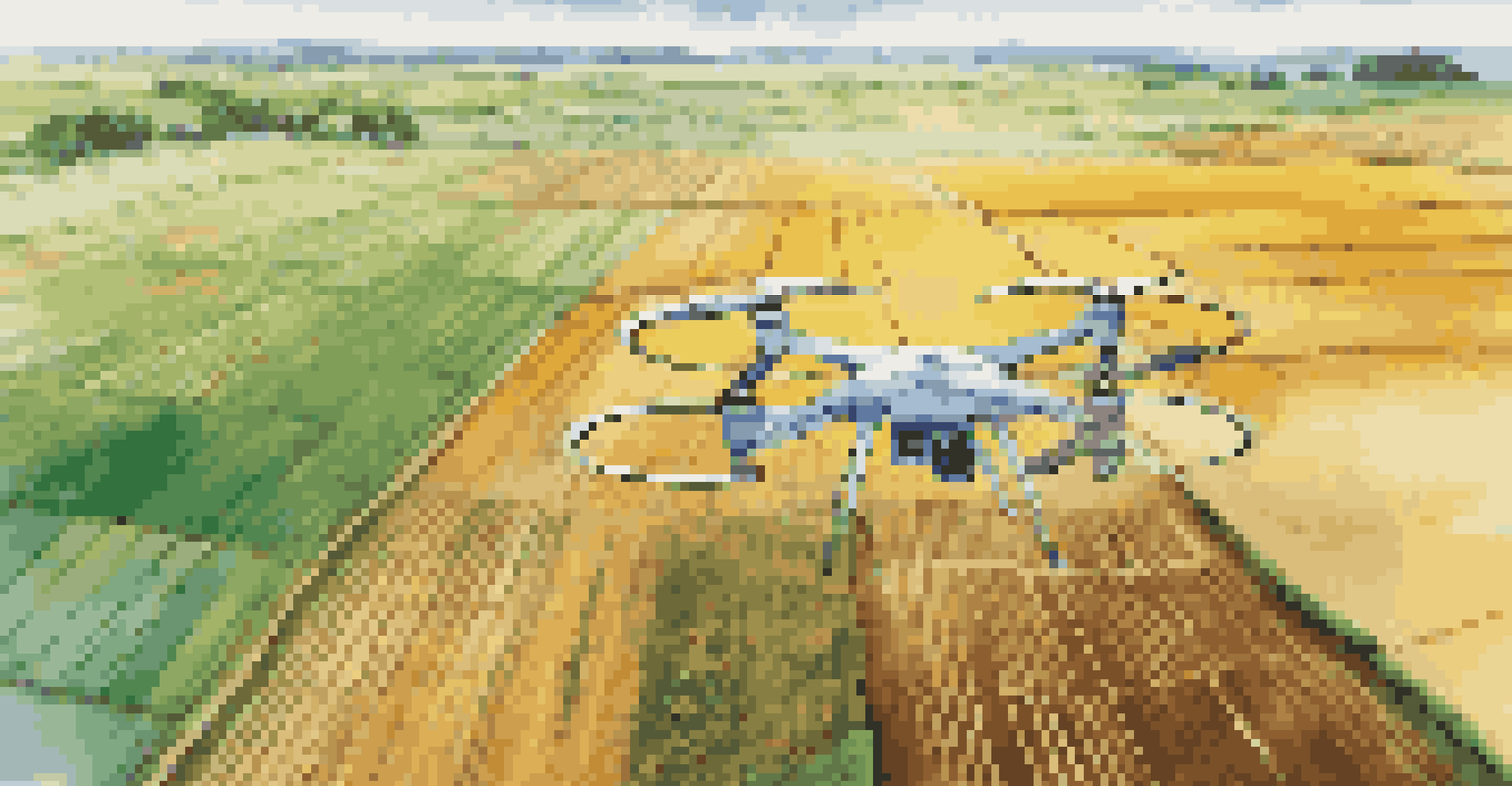Augmented Reality in Agriculture: Smart Farming Solutions

What is Augmented Reality and Its Role in Farming?
Augmented Reality (AR) is an interactive experience that enhances the real world with digital information. In agriculture, this technology overlays useful data onto the farmer's field view, providing insights that traditional methods simply can't match.
The future of farming is not about the land, it's about the data.
For example, AR can visualize crop health by displaying data like nutrient levels or pest infestations directly on the plants. This enables farmers to make informed decisions quickly, potentially saving time and resources.
Ultimately, AR serves as a bridge between technology and agriculture, transforming how farmers engage with their crops and the environment.
Benefits of Augmented Reality for Farmers
One of the most significant benefits of AR in agriculture is increased efficiency. By providing real-time data, farmers can optimize irrigation, fertilization, and pest control, leading to healthier crops and higher yields.

Additionally, AR helps reduce costs. Farmers can identify issues before they become serious problems, which minimizes the need for expensive interventions and maximizes resource use.
AR Enhances Farming Efficiency
Augmented Reality provides real-time data that helps farmers optimize irrigation, fertilization, and pest control, leading to healthier crops.
AR also enhances training for new farmers, allowing them to visualize complex farming concepts and practices, ultimately leading to a more knowledgeable workforce.
AR Tools and Technologies for Smart Farming
Several AR tools are currently transforming the agricultural landscape. For instance, mobile applications can provide augmented views of fields, enabling farmers to assess conditions and track growth patterns effectively.
Technology is best when it brings people together.
Wearable AR devices, such as smart glasses, can offer hands-free data access, allowing farmers to monitor their fields while performing other tasks. This technology enhances multitasking and keeps farmers informed.
Moreover, drones equipped with AR capabilities can survey large areas quickly, providing farmers with comprehensive data that can be analyzed for better decision-making.
Real-World Examples of AR in Agriculture
Companies like Bayer and John Deere are leading the charge by integrating AR into their farming solutions. For example, Bayer's FieldView platform uses AR to provide detailed insights into field conditions, enabling farmers to respond proactively.
Another example is the use of AR in precision agriculture, where farmers can visualize soil health and moisture levels via AR apps. This helps them apply fertilizers and water more efficiently, which is essential for sustainable farming.
AR Tools Transform Agriculture
Mobile apps, smart glasses, and drones equipped with AR capabilities are enabling farmers to monitor fields and make informed decisions effectively.
These real-world applications illustrate how AR is not just a concept but a practical tool that is already making a difference in agriculture.
Challenges of Implementing AR in Agriculture
Despite its benefits, implementing AR in agriculture isn't without challenges. One major hurdle is the initial cost of technology adoption, which can be significant for small farmers.
Additionally, there is a learning curve associated with new technology. Farmers may need training to effectively use AR tools, which can deter some from making the leap.
Lastly, connectivity issues in rural areas can limit the effectiveness of AR applications, as they often rely on stable internet access to function optimally.
The Future of AR in Agriculture
As technology continues to evolve, the future of AR in agriculture looks promising. We can expect to see advancements in AR tools that will further enhance farming practices, making them more efficient and sustainable.
Moreover, the integration of artificial intelligence with AR will likely provide even deeper insights, allowing for predictive analytics that can foresee potential crop issues before they arise.
Sustainability Boosted by AR
AR technology promotes sustainable farming practices by providing precise data that reduces waste and minimizes environmental impact.
Ultimately, embracing AR could lead to a new era of farming that not only boosts productivity but also promotes environmental stewardship.
Sustainability and AR: A Perfect Match
AR technology plays a crucial role in promoting sustainable farming practices. By providing precise data, farmers can reduce waste and minimize their environmental footprint, leading to more responsible resource management.
For instance, AR can optimize pesticide usage, ensuring that only the necessary amounts are applied, thereby protecting beneficial insects and reducing chemical runoff.

The synergy between AR and sustainability highlights how technology can serve both profitability and ecological responsibility in agriculture.
Getting Started with AR in Your Farming Practices
If you're considering integrating AR into your farming practices, start by assessing your specific needs. Identify areas where AR can provide the most value, whether it's crop monitoring, pest management, or training.
Next, look for AR solutions that are user-friendly and offer robust support. Many companies provide trials, so you can test out the technology before committing.
Finally, don't hesitate to seek training and resources to help you and your team effectively utilize AR tools. The goal is to enhance your farming experience and improve outcomes.